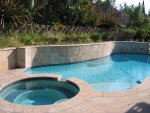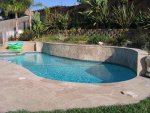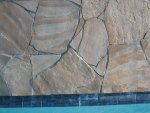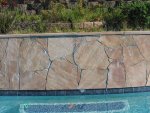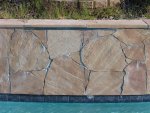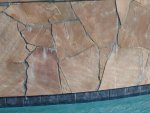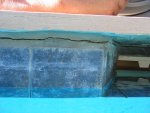My wife and I just purchased a home with an IG gunite kidney shaped pool. The rear wall of the pool extends about 3.5' above the water level and serves as a retaining wall for the slope behind it. This wall has a flagstone veneer placed over it and I have noticed what looks like water seeping out some of the grout lines probably from irrigation of the slope above. I don't believe the rear of this wall was ever waterproofed and am wondering if this is a standard practice when a gunite retaining wall is built. My plan is to remove enough dirt behind the wall to install a french drain near the waterline if there is not already one there and then apply a waterproofing material to the rear of the wall before backfilling it. Does this sound like the correct method of repair for this issue? There is also a waterfall at the top of this wall that flows down over the flagstone and has eroded some of the grout joints. Is this something that can be prevented or will it be something that I need to regrout annually or as needed?
Thank You,
Derek
Thank You,
Derek



